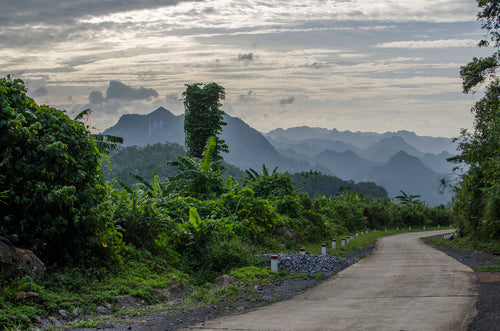ARRIVING AT A SMALL COVE AT MILLER’S POINT, NEAR SIMON’S TOWN, FALSE BAY, A FORTY FIVE MINUTE DRIVE FROM CAPE TOWN, I FOUND IT HARD TO RECONCILE THE FLAT CALM SPARKLING SEA WITH THE HIGH ADRENALINE DIVE I WAS ABOUT TO DO IN AN AREA THAT IS THE EPITOME OF SHARK DIVING WORLDWIDE.

I had been told this dive was possible from a shore entry, but was better from a boat due to the unpredictability of the currents. Pyramid Rock, a small outcrop surrounded by kelp forests, lies approximately 75m from shore. My dive was to be with Seven Gill Sharks, a prehistoric looking apex predator only in danger from Great Whites and Killer Whales. Seven Gill sharks can be found regularly at this dive site year round, especially from November to May when there may be up to 15 sharks around. Unusually, the summer (November to May) water temperatures of South Africa are colder than the winter (April to October) water temperatures, due the the melting antarctic ice flowing through on the current. Water temperatures range from 9 degree in the summer to 15 degrees in the winter. A 5-7mm wet suit with hood, boots and gloves are sufficient to keep out the cold. The visibility in the summer is much better than in the winter reaching between 8-20m, as opposed to 2-10m. Broadnose Seven Gill Sharks (Notorynchus Cepedianus), nicknamed wolves of the sea or cow sharks, differ from other sharks by having seven instead of five gill slits, and an absence of a dorsal fin. They are found around the world, mainly in colder, temperate, and turbid waters.
Their cousins, Sharpnose Seven Gill Sharks (H. Perlo) prefer warmer waters. Normally the adults sharks prefer to remain at depths of more than 500m. Juveniles reside in shallower water in bays and estuaries. For reasons unknown, adult Seven Gills aggregate near Pyramid Rock on a regular basis. It has been suggested they come to rest or too mate, or that it might be a resident community, however, no scientific evidence has been found for any of these suggestions. Adult Seven Gills sharks can grow to 2m for males and 3m for females. They live to an approximate age of 50, and are very slow reproducers. Males Seven Gill Sharks reach sexual maturity at around the age of 5, whereas females only reach sexual maturity at the age of 11. Fairly little is known about mating and gestation, but it is thought the mating occurs around the autumn/winter, and gestation is around one year. The females are ovoviviparous, returning the egg cases within their bodies until they hatch. They move into the shallows where they then give birth to live young.

THROUGHOUT THE FIRST FEW YEARS OF THE SHARKS LIFE, THEY REMAIN IN THE SHALLOW WATER NURSERY GROUNDS BEFORE MOVING INTO DEEPER OFFSHORE ENVIRONMENTS.
The sharks are voracious predators, feeding heavily on rays, bony fish, seals, dolphins, and even other sharks. It has also been found they consume mammalian carrion, including human! The teeth in their lower jaws are large and comb-shaped, used for tearing and cutting into prey. The teeth in their upper jaw are sharp and jagged, used for holding thrashing pray. They are strong, powerful swimmers, opportunistic hunters, able to attack very quickly, sneaking up on prey from behind, and even hunting in groups to attack larger predators. After renting equipment at Pisces Dive Centre in Simon’s Town, I kitted up on the shore, and joined their rib for the very short 3 minute journey out to the Rock. The Seven Gills come inshore during high tide, then retreat to the depths offshore. The break in the reef outside the small harbor is very small. During high tide large swells rise up and over the reef. We were briefed to hold on very tightly whilst the boat captain sped up the swell at great speed, rising over the top and coming to rest on the flat calm seas I had noticed from shore. A short distance later, we were positioned over a sand gully which could be seen from the rib. Large, tall kelp fronds danced around just under the surface. I could not believe how good the visibility was I had been briefed before my dive about the dangers associated with the sharks. I was also told they are extremely curious and will come very close.
These sharks often see you before you see them, so it is imperative to be aware of your surroundings at all time and to keep eye contact with them. I felt a little trepidation as I back rolled off the rib and descended into the surprisingly clear water, passing down through the long strands of kelp to a sandy bottom scattered with boulders at around 12m. There, the group split into three or fours and swam slowly around the gullys and sand spits, weaving in and out of the kelp fronds, peering into the distance to try to see the sharks. I was told the success rate was around 85% of seeing a shark. After a few minutes, I was distracted by the amount of marine life living around the kelp forest. The dive site is part of the protected Castle Rock marine reserve, which means the area is filled with many fish species such as Red Steenbras, Red Roman and Galjoen, South Africa’s national fish. Spotted Gully Sharks can also be spotted, along with Puffadder Shysharks, brown Catsharks, Pyjama Sharks and Leopard Catsharks. My eyes strained into the distance, finally settling on an ancient, prehistoric looking creature, swimming slowly, but purposely towards me. I sank down onto the sand and waited quietly.

THE SEVEN GILL SHARK SWAM ON A STRAIGHT LINE PASSING BY ME A MERE HALF A METER AWAY.
As I settled into the sand, being rocked very gently by a very slight surge, I slowly looked around and spotted another two sharks heading directly towards me, also passing by at arms length. The sharks seemed to disappear into the bluey green murk, only to appear a couple of minutes later from a completely different directions. At least 10 different sharks visited me and the other divers over the next forty minutes. The interactive experience of staying still whilst the sharks come to check you out, eyeballing you then gliding serenely past, is like no other natural encounter I have experienced. Shark baiting or feeding is the only other way I have known sharks to come so close. Seven Gill Sharks can be seen by divers in other places in the world, such as the Mornington Peninsula is Victoria, Australia, or La Jolla or San Diego off the southern coast of California, but very infrequently, and are reported to be very aggressive towards divers. This small, beautiful area near Cape Town, is a treasure not many people know about. It can be dived by and enjoyed by even novice divers, and, if fact, can be dived as a try dive for the very brave through Pisces Divers. Other dive companies include Apex Predators. This is a very special dive. A few minutes into the dive, the adrenaline I felt at the beginning ebbed away, leaving a feeling of peace, a sense of being at one with the ocean and these incredible creatures, and being a part of a very unique and incredible experience.
BY LISA COLLINS
Stay in the loop







